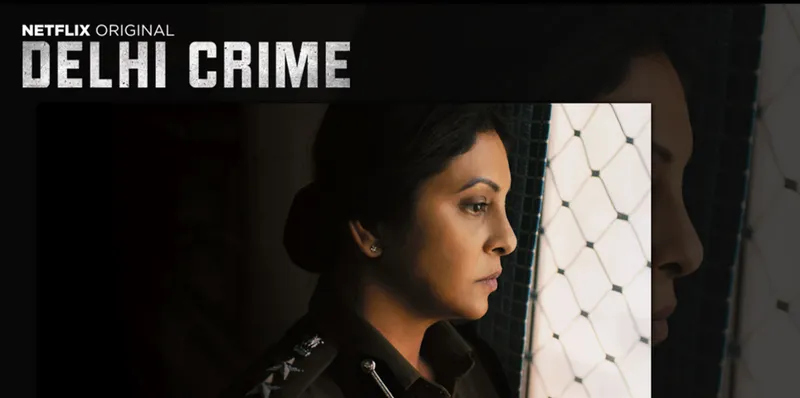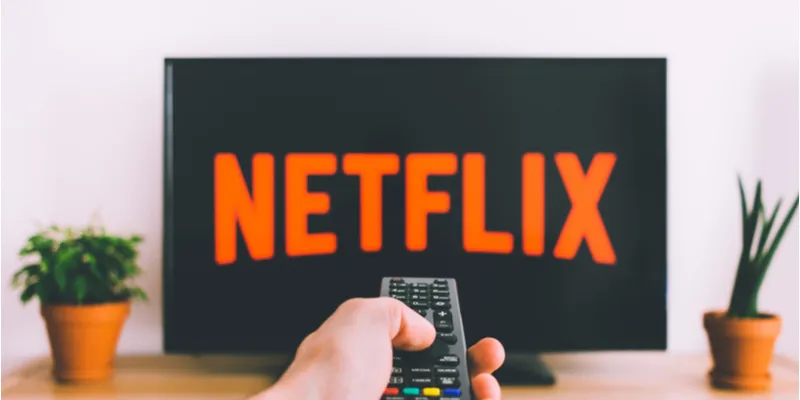[Rewind 2020] OTT’s breakthrough year: From lockdown surge to rural reach to International Emmy’s
OTT had been the fastest-growing segment of India’s media and entertainment sector for the past two years. But 2020 brought about its demonetisation moment, with online streaming becoming the only stay-at-home entertainment option.
It may not be an exaggeration to say that 2020 was OTT’s breakthrough year in India. After being in the shadow of mainstream entertainment mediums like film and television for years, OTT finally had its time in the sun.
We’ll get to the numbers in a bit, but first: What drove OTT’s growth in 2020?
The most obvious growth driver has been the pandemic. OTT was practically the only medium of entertainment to fall back on after the lockdown in March.
With theatres, multiplexes, and all outdoor entertainment venues shutting down, and lockdown restrictions bringing TV studios to a screeching halt, digital became the only stay-at-home entertainment option, with a steady stream of fresh content.
While tailwinds were being felt even before the pandemic, the tipping point for streaming services came only after it. It was OTT’s demonetisation moment.
From releasing original shows at an unprecedented rate to acquiring top licensed content, including Bollywood premiers setting off the direct-to-digital trend, and customising content for a widening demographic — OTT platforms left no stone unturned to woo audiences.

Photo: Shutterstock
Lockdown growth to Emmy's
OTT was the only segment of media and entertainment that continued to grow. Revenues climbed 26 percent and subscriptions rose 47 percent, according to KPMG.
"Consumers are rebalancing rather than reducing expenditure away from outdoor entertainment, cinema, and concerts to OTT and gaming,” it stated in a report.
The upsurge continued through the year as COVID-19 stayed unvanquished and outdoor entertainment venues remained under an extended lockdown.
It is estimated that about 325 million Indians today stream online video — either ad-supported or paid. “To say OTT isn’t mainstream is incorrect. It is really, really deep. It is not a metro thing,” Gaurav Gandhi, Director and Country General Manager, Amazon Prime Video, India, said at TechSparks 2020.

Image Courtesy: PC Mag
He also revealed that Amazon’s direct-to-digital releases were watched in 4,000 Indian cities and towns within the first week of streaming, with the OTT platform recording a 6X growth in hours watched per user.
Further, NASSCOM stated that OTT viewership in India is at an “all-time high now”.
“While OTT platforms were making a mark for themselves in the Indian market, COVID-19 crisis accelerated the process. From just two OTT platform providers in 2012 to about 40 players now, the OTT revolution has come a long way,” it said.
OTT’s crowning glory in an already ground-breaking year came in November when Netflix’s acclaimed Indian original Delhi Crime won the International Emmy for Best Drama Series. Other desi shows were also nominated for the awards.

Delhi Crime won the 2020 International Emmy Award for Best Drama Series
YourStory lists some of the key trends that defined the OTT sector in 2020, and are likely to outlast the pandemic.
Direct-to-digital releases
Until 2020, Bollywood films premiering on digital mediums before their theatrical release was almost unheard of. But desperate times called for desperate measures.
In June, Amazon Prime Video bucked the trend to digitally release Gulabo Sitabo, starring A-listers Amitabh Bachchan and Ayushmann Khurrana, and shared its upcoming slate of direct-to-digital films.
Soon, rival OTTs like Netflix, Disney+ Hotstar, and ZEE5 followed. Over 15 Bollywood titles, several OTT-only releases, and multiple regional language films have premiered digitally since then.
Some of these include Dil Bechara, Shakuntala Devi, Lootcase, Gunjan Saxena, Bulbbul, Choked, Ghoomketu, Khuda Haafiz, Khaali Peeli, Sadak 2, Laxmii, etc. More like Durgamati, Big Bull, and Bhuj are lined up for release shortly.

Image Source: Shutterstock
In a recent report, PwC said that 2020 “presents a key tipping point” as OTT revenues overtake theatrical earnings of films for the first time. “We expect it to be higher than box office even for the next three to four years,” it stated.
Even OTT industry executives believe that the direct-to-digital trend will outlast the pandemic. “The winds have shifted and the numbers reflect the immense potential and reach of this segment,” Aparna Acharekar, Programming Head, ZEE5 India, told YourStory earlier.
“Economically too, digital rights are something production houses can benefit from and for platforms, these convert into new subscribers and streaming hours,” she said.
Explosion of small-town viewers
Until 2019, OTT consumption was largely a metro phenomenon, with over half the audience spread across India’s top eight cities. That changed in 2020.
Due to a dearth of recreational options in Tier-II cities and beyond, with movie theatres — their primary mode of entertainment — shut indefinitely, consumers in these areas took to streaming services by the hordes.
During the lockdown, over 65 percent of OTT content consumption was recorded in rural India, according to the Broadband India Forum (BIF). The trend was accentuated by the fact that this audience was already smartphone-savvy and had access to affordable internet.

Image Source: Shutterstock
Hence, mobile became the predominant mode of content consumption.
This is also driven by aggressive telcos that are bundling a bunch of OTT subscriptions along with mobile data packs at zero additional cost.
“OTT subscriptions have become the latest weapons in India’s telecom war,” NASSCOM said.
“Unlike the common thought that urbanites are watching more content online, 65 percent video consumption is coming from the rural parts of the country thanks to cheap data plans, especially from Reliance Jio, and affordable smartphones. Those who cannot afford to buy a smart, connected TV are now streaming OTT content on phones,” TV Ramachandran, President, BIF explained.
Rising demand for non-English content
The rapid growth in small-town viewers is changing content consumption patterns on OTT. Streaming platforms recorded an exponential rise in viewership of non-English content, especially Hindi titles, which accounted for over 50 percent of the overall watch minutes during the lockdown.
In fact, in 2020, Amazon’s most talked about shows were Paatal Lok and Mirzapur 2 that are not only local but also tailored for Hindi hinterland audiences.

Scam 1992 is India's highest-rated OTT show in 2020, as per Ormax Media
The other big hit of 2020 was SonyLIV’s Scam 1992 — a Hindi show with bits of Gujarati. It is also India’s top-rated OTT series of 2020, as per Ormax Media.
The year even saw a spate of regional films, especially South Indian titles, premiering on OTT platforms. C U Soon, Soorarai Pottru, Andhaghaaram, Middle Class Melodies, Maara, to name a few. Many more are slated for release in 2021.
IBEF estimates that in India, only seven percent of the total time spent on OTT platforms is on English content.
To cater to this need, generalist OTTs are expected to continue investing in original and acquired content in regional languages.
Emergence of pure-play regional OTTs
Since 2017, Google has harped about the fact that India’s next 500 million internet users would be “language users” from small towns, who would “need access to great content in their native tongues on their smartphones”.
That trend played out dramatically across the OTT industry in 2020.
As the online streaming audience expanded beyond millennials and metros, and more homemakers and senior citizens became OTT viewers, it led to a mushrooming of pure-play regional streaming platforms in the country.

Photo: Hoichoi
Until 2018, there were about two such services, now there are more than 10.
Some of these include Hoichoi (Bengali), Addatimes (Bengali), Simply South (Tamil, Telugu, and Malayalam), Sun NXT (four South Indian languages), Aha Video (Telugu), Filim (Telugu), Planet Marathi (Marathi), CityShor TV (Gujarati), and more.
Girish Menon, Partner and Head, Media and Entertainment, KPMG India, told YourStory, “With deepening digital infrastructure across Tier-II and III cities, and further helped by the spike in digital consumption on account of COVID-19, pure-play regional OTT platforms are seeing significant traction."
"These have the advantage of a single-minded focus on a particular language, and staying close to the cultural nuances of that language. They are [also] relatively more affordable compared to multilingual platforms," he added.
While 2020 was a remarkable year for India's OTT sector, we can't wait to see what 2021 has in store.
Edited by Saheli Sen Gupta


![[Rewind 2020] OTT’s breakthrough year: From lockdown surge to rural reach to International Emmy’s](https://images.yourstory.com/cs/2/dc9aa1302d6c11e9aa979329348d4c3e/OTT-1-1606910747948.png?mode=crop&crop=faces&ar=2%3A1&format=auto&w=1920&q=75)




![[App Fridays] Meet JustWatch, the Trivago for movies and web shows](https://images.yourstory.com/cs/2/dc9aa130-2d6c-11e9-aa97-9329348d4c3e/justwatch_lead_(1)_(1)_(1)1564043413910.jpg?fm=png&auto=format&h=100&w=100&crop=entropy&fit=crop)






